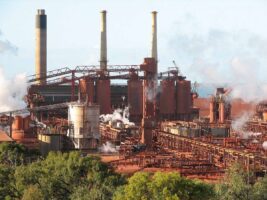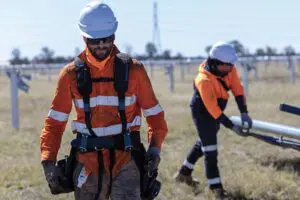Public health and environmental damage caused by Europe’s largest industrial polluters cost the European Union EUR 4.3 trillion over the decade 2012 to 2021 according to a new briefing paper released by the European Environment Agency.
The EEA’s assessment shows that externality costs from Europe’s industrial air pollution dropped 33% over the decade with the energy sector contributing 80% of the overall decrease. The EEA says that improvements in the energy sector have been largely driven by the EU’s climate and environmental policies.
Big coal still the main culprit
Despite the large cuts, the highest externality costs were still caused by the energy sector, followed by heavy industry, fuel production and processing, light industry, waste management, livestock and wastewater treatment.
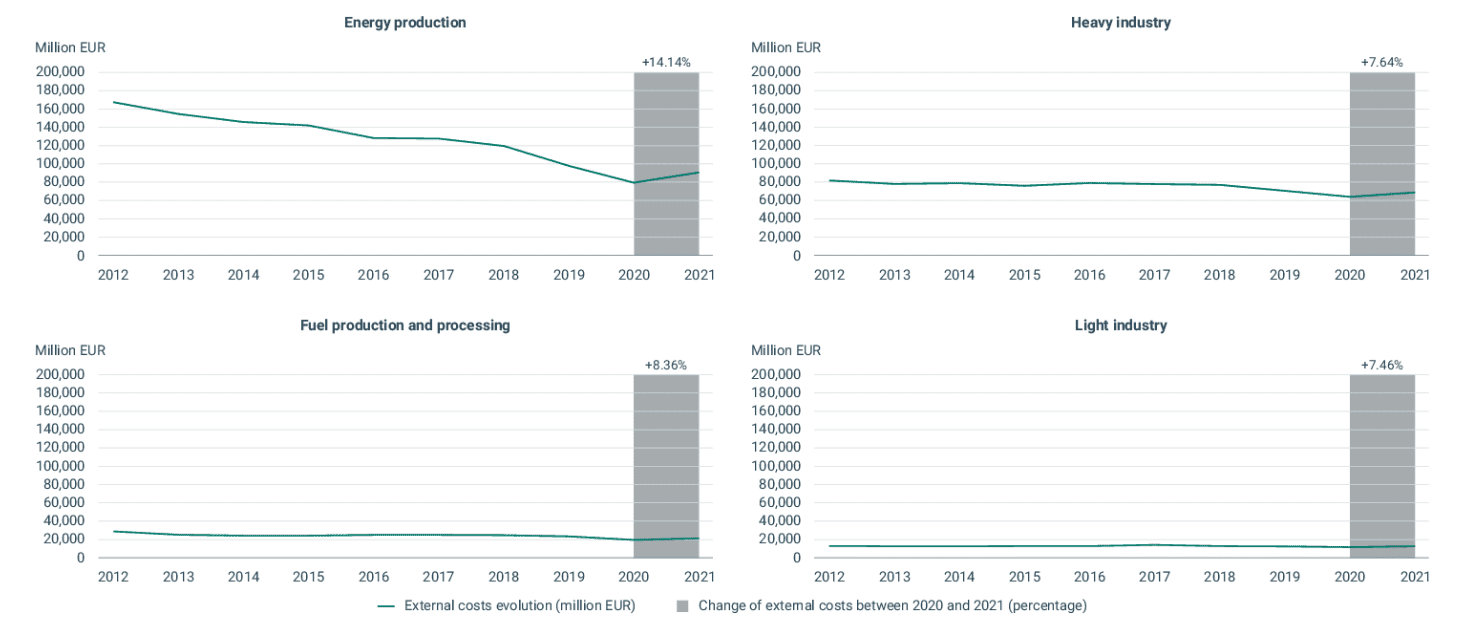
Of the 9,400 industrial facilities included in the assessment, the EEA found that just 107 (1.1%) caused 50% of the total damage and that half of the 50 most polluting facilities were coal power stations.
The study used industrial emissions reported to the European Industrial Emissions Portal from large operators such as power plants, refineries and steelworks as well facilities in waste management, chemicals and agriculture.
The EEA conducted dispersion/atmospheric chemistry modelling to understand which areas and populations were being exposed to the pollution and then analysed how the pollution is likely to affect populations looking at mortality and morbidity as well as environmental impacts.
Industry avoiding trillions in externalities
To translate the real world physical damage to human health and the natural environment, the EEA then conducted an economic valuation of the impacts using the value of statistical life (VSL) and value of life year (VOLY) methods. Based on these two methods, the EEA estimates that external costs of Europe’s industrial pollution on health and environment to be between €2.7 to €4.3 trillion ($A4.5 to $A7.1 trillion) over the decade.
According to the EEA this amounts to up to an average of €428 billion per year (2% of the EU’s GDP) in health and environmental externality costs not borne by the companies producing the pollution.
The EEA says that based on the VSL and VOLY methods, main air pollutants (NH3, NOx, PM10, SO2, and NMVOCs)
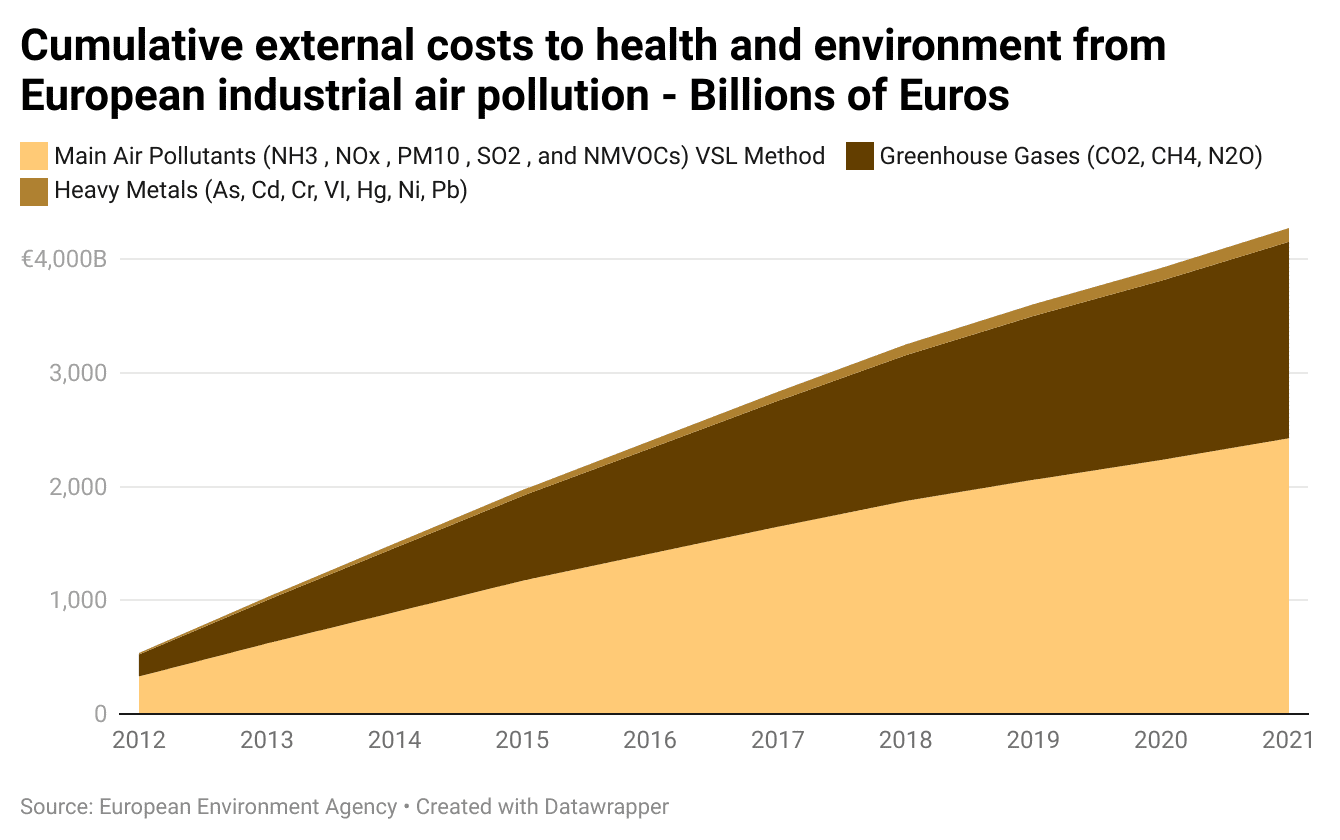
Europe’s Polluter Pays Principal
The Polluter Pays Principle (PPP) is a key underlying principle to all European Union environmental regulations. In a special report in 2021, the European Court of Auditors (ECA) found inconsistencies in the way PPP has been applied to various environmental policies and actions. Among other things, the ECA assed whether the European Commission and Member States protected the EU budget from being used to bear expenses that polluters should have paid.
According to the ECA report, The PPP applies to the most polluting installations but the cost of residual residual pollution to society remains high which is confirmed by the EEA’s astronomical externality cost findings.
Human Rights Watch Report
The findings from the European Environment Agency’s showing multi-trillion euro health and environmental costs from industrial pollution, coincide with a new report from Human Rights Watch with more damning evidence showing the devastating impact the petrochemical industry’s has on human health.
The new report from Human Rights Watch titled “We’re dying here” investigates the devastating health impacts the petrochemical industry is having on residents of communities along an 140 km stretch of the Mississippi River between New Orleans and Baton Rouge. Now referred to as “Cancer Alley” the area has around 200 fossil fuel and petrochemical operations, reportedly the largest concentration of such industry in the world.
The report’s findings show that residents living in proximity to these facilities face severe health harms including significantly raised risk of cancer, reproductive, maternal and newborn health harms and respiratory ailments.
The study included analysis of US Environmental Protection Agency (EPA) data and found the area had the highest risk of industrial air pollution in the US and that residents were more than seven times more likely to develop cancer than the US average.
As part of the research, Human Rights Watch interviewed 70 people including 37 Cancer Alley residents, current and former officials of the EPA, US Center for Disease Control and Prevention (CDC) as well as physicians, academics. lawyers, health care providers, advocates. Residents involved in the study shared accounts of cancer diagnosis including breast, prostate and liver cancers.
Women also told their own personal stories of maternal, reproductive and newborn health harms as well as those of immediate family members, friends and neighbours including low-birth weight, preterm birth, miscarriage, stillbirths and infertility.
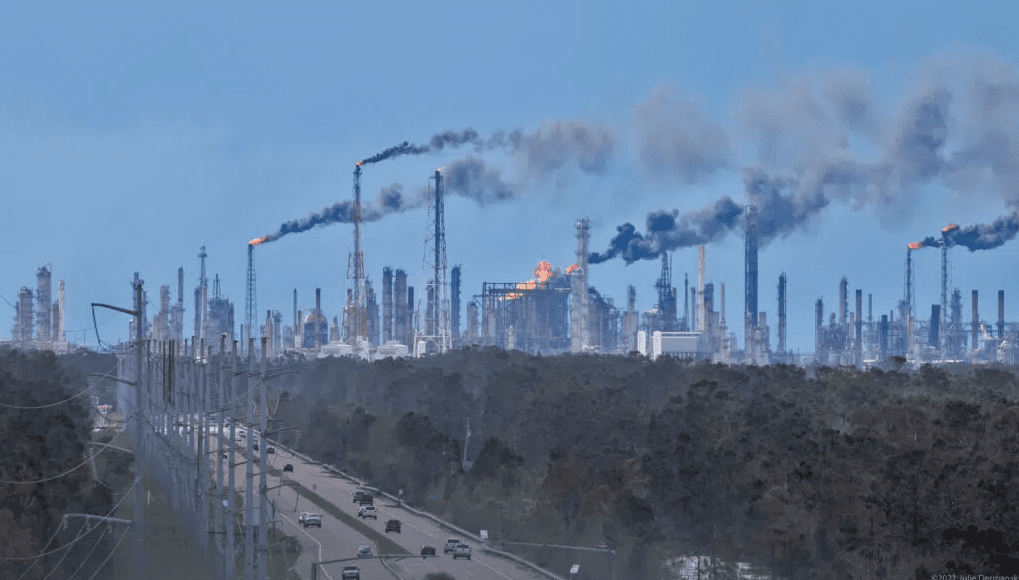
Recent modelling has shown there is no capacity grounds to extend the scheduled closure date of Eraring power station, Australia’s largest coal-fired power plant.
The staggering physical and financial costs of fossil fuel industry pollution released by the European Environmental Agency and Human Rights Watch this month highlight the urgent need for Australian state and federal governments to further accelerate the closure of major fossil fuel power plants and petrochemical industry.


